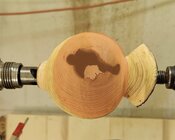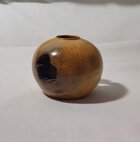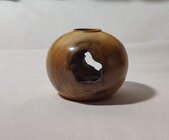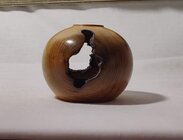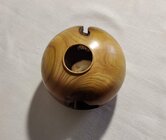About a year ago, I posted pictures of a mulberry with a hole through the pith. Someone said, "That would make a great hollow form." Today I cut a section of that log and mounted it. I have rough turned it. Unfortunately, I probably took too much material off the bottom and now the hole is down near the bottom rather than centered. I'm curious how you HF folk would shape this at this point.
What profile would you go for here? I'm not opposed to you drawing lines on my photo. I can probably turn it around if needed.
I can probably turn it around if needed.
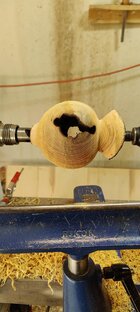
What profile would you go for here? I'm not opposed to you drawing lines on my photo.


